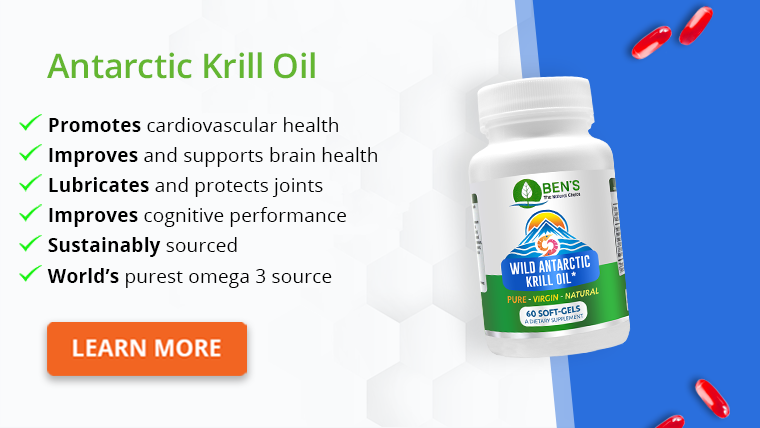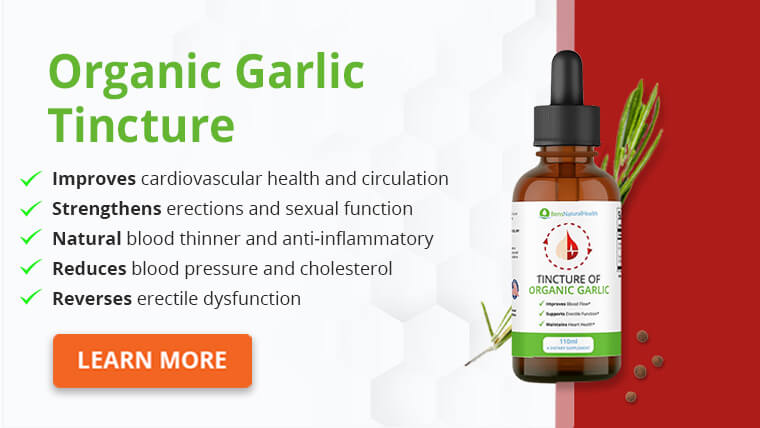- What is cardiac arrest?
- What is a heart attack?
- Cardiac arrest vs heart attack
- Is cardiac arrest the same thing as a heart attack?
- Warning signs
- Differences
- Similarities
- Causes of cardiac arrest vs heart attack
- Diagnosis
- Treatment
- Lifestyle changes
- Which is more dangerous, cardiac arrest or heart attack?
- Conclusion
- Source
Cardiac arrest and heart attack are two familiar terms when discussing sinister causes of death.
Both are acute cardiac events, and people often use these terms interchangeably.
However, they are actually not synonyms.
Read further to know the difference between cardiac arrest vs heart attack and how to avoid getting into trouble with these two conditions.
What is cardiac arrest?
Cardiac arrest is the condition in which the heart stops beating as a whole. It compromises the blood circulation system because the heart, as the engine, stops pumping fuels (the blood) to all other body parts.
Vital organs such as the brain and lungs will not survive without oxygen carried by the blood. Once a cardiac arrest happens, the patient will lose consciousness within seconds, pulses stop, and death occurs within minutes if no resuscitation treatment is given.
According to the American Heart Association, cardiac arrest mostly happens (around 75%) at home. Meanwhile, another 2019 review in the United States estimated that 0.29 million people develop cardiac arrest during their stay in the hospital each year. All heart conditions that we know can result in cardiac arrest.
What is a heart attack?
Myocardial infarction, often known as heart attack in layman’s terms, occurs when a coronary artery (blood vessels in the heart that carries blood rich with oxygen) becomes blocked.
Oxygen cannot reach certain heart parts, causing muscles to die if the occlusion is not removed in time. Eventually, the dead muscle can disrupt the ability of the heart to pump properly, leading to irregular heartbeats or a stop-beating heart altogether– a cardiac arrest.
Heart attack is a major type of ischaemic heart disease (heart disease when the heart is not getting enough blood and oxygen).
Based on the Global Burden of Disease study in 2019, people suffering from cardiovascular diseases, especially ischemic heart disease, nearly doubled from 271 million in 1990 to 523 million in 2019.
Fortunately, a heart attack usually has early symptoms, which can warn you to seek medical help. It is also preventable– we will see how later in this article.

Cardiac arrest vs heart attack
Below, we discuss cardiac arrest vs heart attack in terms of warning signs, causes, risk factors, similarities, and differences.
Is cardiac arrest the same thing as a heart attack?
No. Cardiac arrest is a different entity from a heart attack.
Here are some important concepts to understand why they are different.
Our heart rate is controlled by a tiny node called the sinus node. It releases electrical signals that are transmitted consecutively, layer by layer, to all parts of the heart. When there is a problem with this node or any interruption of the signal transmission, the heart cannot beat properly, causing irregular heartbeats (arrhythmias).
A cardiac arrest is a condition in which the whole heart stop beating altogether due to this interruption of normal heart beating pattern– it is an “electrical” problem. Death occurs in a few minutes if there is no treatment.
Meanwhile, a heart attack happens when some heart muscles are not receiving enough blood (due to the blood vessel blockage), and that part of the heart starts to die. It is a “circulation” problem.
Does your heart stop when you have a heart attack?
Maybe, but not always. In fact, most heart attacks do not result in cardiac arrest.
Warning signs
If you have the below signs, go to the A&E immediately.
- Chest discomfort. People having a heart attack often describe the feeling as uncomfortable pressure, squeezing, crushing, or pain. It is dull and heavy, like a giant stone sitting on the chest. The discomfort usually lasts for a few minutes and comes back later.
- Discomfort in other upper body parts. The chest discomfort or pain can radiate to other body parts such as the arms, shoulder blades, back, neck, jaw, or stomach.
- Breathlessness. People having a heart attack might have breathlessness and, sometimes, cough and wheezing.
- Cold sweats
- Irregular heartbeats (palpitations)
- Nauseous or choking sensation
- Lightheadedness
Above are signs of coronary heart disease (including heart attack), which means your heart is not receiving enough blood, and its tissue is dying.
Unfortunately, a cardiac arrest usually does not have any signs and symptoms. Call 911 or go to the A&E without further delay if you have the above features.
Differences
Here is a glance through cardiac arrest vs heart attack:
1. Why they happen is different
As mentioned, cardiac arrest is an “electrical” problem, while a heart attack is a “circulation” problem. Many other heart conditions that do not cause heart attack can cause cardiac arrest.
For example, thickened heart muscle (cardiomyopathy), heart failure, irregular contraction of the heart ventricles (ventricle fibrillation), and signal conduction disorders like long Q-T syndrome.
2. Their severity of impact is different
A heart attack usually just affects some parts of the heart, depending on the territory of the affected blood vessels. On the other hand, cardiac arrest affects the whole heart.
3. The onset and progression of symptoms are different
As the name suggests, a heart attack can happen suddenly and intensely. However, it usually gives warnings. Symptoms often start gradually and persist for hours, days, or weeks before the heart attack.
Meanwhile, “when does sudden cardiac arrest occur” remains a question as it usually has no warning signs.
4. CPR vs no CPR
The necessity of cardiopulmonary resuscitation (CPR) or chest compressions is different for cardiac arrest vs heart attack.
Most heart attacks do not cause the heart to stop beating; therefore, there will be a pulse. Cardiac arrest means the heart stops pumping blood, so there will be no pulse.
The immediate action for both is to call 911, but in a heart attack with pulses, chest compressions are not needed, while chest compressions are always required in cardiac arrest.
Similarities
Now, here are the similarities between cardiac arrest vs heart attack:
1. They are both heart problems
All causes of heart attack can cause cardiac arrest. Heart attacks increase the risk of cardiac arrests, and cardiac arrest can occur during or after heart attacks, especially within the first six months after a heart attack.
2. They are life-threatening
Both are significant causes of death– 5 to 30 % of people die of a heart attack. At the same time, for cardiac arrest, the mortality rate can go as high as 90%, according to statements by the American Heart Association.

Causes of cardiac arrest vs heart attack
Although, in general, all causes of heart attacks can lead to cardiac arrest, several prominent risk factors are strongly related to cardiac arrest. Here we will be discussing the etiologies of cardiac arrest vs heart attack.
Causes of cardiac arrest
The mechanism of how cardiac arrests occur is the malfunction of the heart’s electrical signals system, meaning the electrical signals are not properly conducted to the whole heart.
The heart does not receive the instruction (the electrical signals); therefore, it stops pumping. Based on this theory, any abnormal heart rhythm, such as irregular contraction rhythm of the heart ventricles (ventricle fibrillation), ventricles contracting too fast (ventricular tachycardia) or too slow (bradycardia), can lead to cardiac arrest.
Other common causes of cardiac arrest include:
Scarring of the heart tissue
Any previous injury to the heart (including a heart attack) can leave scars on the heart tissue. The heart cannot contract freely with these scars, increasing the risk of cardiac arrest.
Thickened heart muscle (cardiomyopathy)
High blood pressure and valvular heart disease usually cause this condition. Like scars, a thickened heart muscle cannot contract efficiently, resulting in cardiac arrest.
Drugs and minerals
Some heart medications and recreational drugs can disrupt the heart’s normal rhythm, causing irregular heartbeats (arrhythmias) and cardiac arrest. Drastic, large-scale changes in potassium and magnesium levels in our body can exert similar effects too.
Genetic defects
For example, Wolff-Parkinson-White syndrome and Long QT syndrome. They are the causes of cardiac arrest in young adults and children.
Abnormal structures of heart blood vessels
People with such heart conditions might need to avoid intense physical activities as adrenaline released during exercises can constrict blood vessels. Less blood reaches the heart, and eventually, the heart stops beating.
Causes of heart attack
Heart attack has many causes, and we can group them into something you can change (modifiable risk factors) and something you can’t change (non-modifiable risk factors).
Modifiable risk factors for heart attacks
Fortunately, a large portion of causes of heart attacks are modifiable, meaning you can pay efforts to protect yourself against a heart attack.
These causes are:
Smoking
Tobacco relates strongly to a high risk of cardiovascular diseases and increases the risk of cardiac arrest among people with these diseases. Even if you do not smoke, but your family members are smokers, you are at a higher risk of developing cardiovascular diseases.
High cholesterol
Cholesterol forms plaque buildup on the wall of blood vessels, causing a narrow passage for blood to flow through. When the fat deposit completely blocks the vessel, if the blocked vessel locates in the heart, a heart attack has occurred. If it is in the brain, we call it a stroke.
High blood pressure
This increases the heart’s workload. Over time, the heart muscle becomes thickened and stiffer (cardiomyopathy). The damaged heart can no longer pump efficiently, leading to heart attack and heart failure.
Sedentary lifestyle
Exercise helps to control blood pressure, cholesterol, diabetes, and obesity. People lacking exercise are more prone to heart attacks due to these co-existing conditions not being controlled.
Overweight and obesity
People with excess body fat, especially central obesity (excess fat at the waist), have a higher risk of cardiovascular diseases.
Diabetes
68% of elderly (over 65 years old) with diabetes die of heart disease.
Stress
Psychological stress due to physical ailments, mental illness, or socioeconomic status contributes to a higher risk of heart disease.
Alcohol
Alcohol consumption increases blood pressure, cholesterol, and the chance of irregular heartbeats, leading to heart attack or cardiac arrest.
Diet
We are what we eat. An unhealthy diet makes you more vulnerable to all the other health conditions related to developing heart diseases.
Non-modifiable risk factors for heart attacks
In contrast to modifiable risk factors, there are a few risk factors that you can’t change. They are:
- Old age. The death toll of heart attack increases tremendously among people over 65 years old, especially women.
- Male gender. Men have a higher tendency to develop heart attacks at a younger age, usually 40s to 50s.
- Race. High blood pressure, a major risk factor for heart attack, is more severe in African-Americans than Caucasians. Heart disease risk is also higher among Mexican-Americans, Native Americans, native Hawaiians, and some Asian Americans.
- Family history. If you have family members, especially parents, with heart disease, you are also prone to heart disease.
You can’t control your age, sex, race, and family you are born into. So, managing those modifiable risk factors is the best way to prevent a heart attack.
Diagnosis
When people have a cardiac arrest, they will turn unconscious, not breathing or showing signs of breathlessness, and has no pulse. A heart rhythm analyzing test called an electrocardiogram (ECG or EKG) will show a severe irregular rhythm (ventricular arrhythmias) or no heartbeat at all, and this finding confirms a cardiac arrest.
The reasons behind the cardiac arrest will be investigated if the patient survives. Common tests include blood tests, heart imaging, genetic tests, and a specific test to measure your heart rhythm directly from the heart (electrophysiology study).
For heart attack, ECG is the top and first choice of tool in making a diagnosis. By analyzing the waves shown on ECG, your doctor can make a diagnosis quickly and proceed to treatment in the shortest time possible.
The other common blood test that aids in diagnosing a heart attack is cardiac biomarkers. They are substances released when heart muscles break down in a heart attack.

Treatment
Everyone needs to know how to identify and what to do when someone goes into cardiac arrest. If you notice someone near you suddenly become unconscious, not breathing, or having signs of breathlessness, please stand out and do chest compressions.
At the same time, ask others to call an ambulance and bring you an automated external defibrillator (AED). Time is life for someone having a cardiac arrest, regardless of the underlying etiology.
In the same scenario, If the person is still responsive but is in severe pain, sweating, and gasping for air, please help to call an ambulance– that person probably has a heart attack. Get ready to perform chest compressions if they become unresponsive and you cannot feel any pulse.
Once the patient is sent to the hospital, the mainstay heart attack treatment would be:
- Reperfusion therapy (percutaneous coronary intervention (PCI) or fibrinolysis)
- Painkillers (morphine)
- Vessel dilators (nitrates)
- Drugs that slow down heartbeats (beta-blockers)
- Drugs that prevent coagulation of blood (aspirin)
For cardiac arrest, treatments vary widely, depending on the underlying etiology. Nonetheless, the first step to take is always to do chest compressions.
Lifestyle changes
Lifestyle modification is essential in preventing heart attack and cardiac arrest. Here are what you can do to build a healthy lifestyle:
Quit smoking
It doesn’t matter if you are a current smoker. Once you stop smoking, you can reverse its damaging effects over time.
Exercise and maintain a healthy body weight
A slight 3 to 5% weight loss among overweight people can significantly reduce the risk of cardiovascular diseases. If diet control is too stressful for you, do more exercises to compensate for the excess calorie intake.
Reduce salt intake
A low salt intake diet can lower the risk of high blood pressure.
More greens, less meat diet
Eat more vegetables, fruits, and whole grains. Limit your intake of red meats and sugars.
Limit alcohol consumption
Men should not take up to two drinks per day, while women should take at most one drink daily. One drink is equivalent to 45 mL of 80-proof spirits (vodka, gin, etc.), 150 mL of wine, or 350 mL of beer.
Which is more dangerous, cardiac arrest or heart attack?
Cardiac arrest vs heart attack– which is more dangerous? If you have read this far, you should have known the answer– and you are right!
Cardiac arrest is more lethal given its unpredictable pattern, lacking warning signs, and extremely short time allowed for resuscitation before death. Most heart attacks do not result in cardiac arrest, but a heart attack is often the culprit when a cardiac arrest occurs.
Conclusion
Both cardiac arrest and heart attack are dire heart conditions that need immediate medical attention. Stay calm, call your local emergency number and check the patient’s pulse– start chest compressions immediately if there is no pulse.
Take your important belongings, such as identity cards and wallets, and get ready to answer questions from the emergency medical staff while escorting the patient to the hospital.
Explore More







